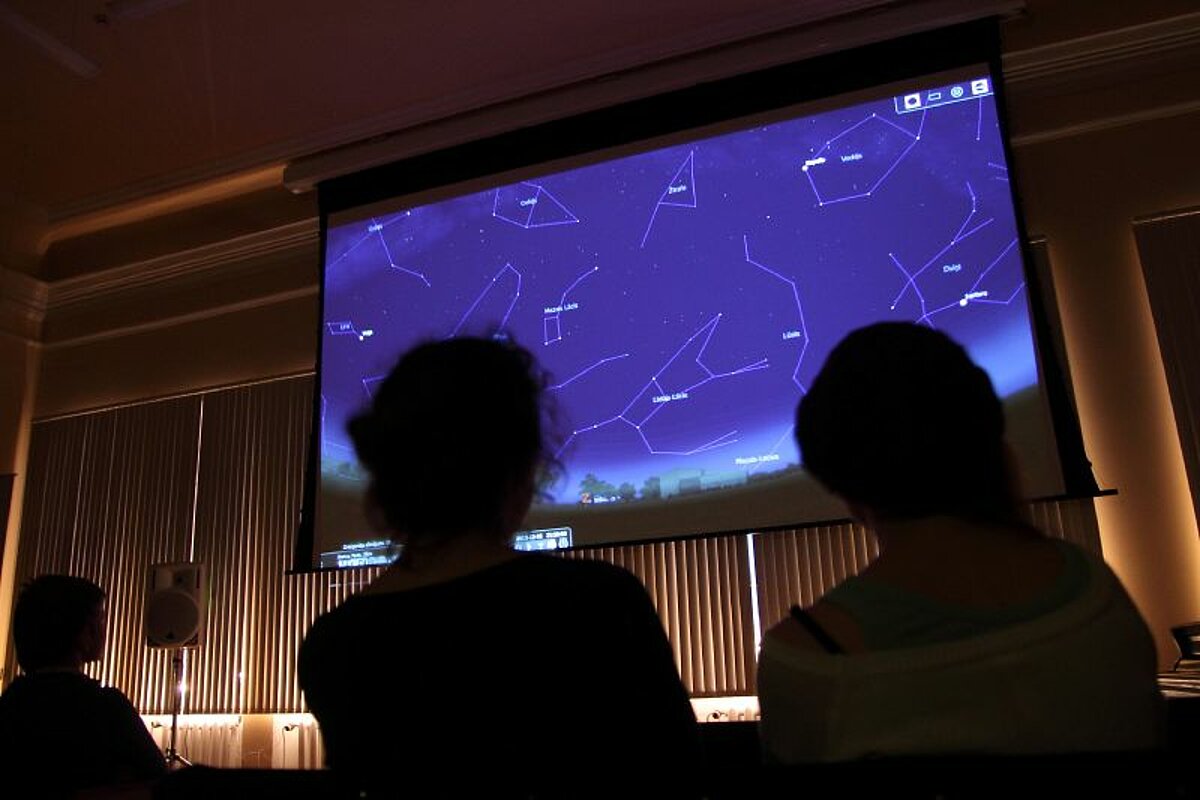
The new mini-planetarium holds everything related to the starlit sky, from the Moon to exotic black holes and distant galaxies. Visitors can see what the sky looks like from the Earth, the Moon, a distant planet, as well as in the past and even the future.
So, why a mini-planetarium? Unlike traditional planetariums where the celestial sphere is demonstrated on the dome, here the starlit sky and celestial objects can be seen on a large flat screen. The opening of the planetarium was planned to coincide with the 50th anniversary of the former Riga planetarium, which welcomed the first visitors in early December 1964, and still lives in the memory of many people. Back then only mechanical devices were used to demonstrate celestial phenomena, while nowadays digital technologies can show anything the human imagination is able to visualize.
The mini-planetarium was established by the UL Museum of the History of Science and Technology. “The idea about the planetarium was born a long time ago, but there were no resources to implement it. This year, the museum won the UL Foundation competition ‘The Best Project of the University of Latvia’. Thanks to the funds allotted by the Foundation, the dream has now come true,” says Museum Director Ilgonis Vilks, who will also hold the weekly lectures. In the future, it is planned to invite guest lecturers and translate several video materials about astronomy.
The new mini-planetarium welcomes everyone interested in celestials, be it a first-grade student or an experienced stellar researcher.
Regular sessions: on Thursdays at 18:00, except public holidays, with advance registration at www.lu.lv/planetarijs. The entrance fee is EUR 2.00 for adults and EUR 1.00 for students, pensioners and persons with disability.
Address: UL main building 19 Raina Blvd., Riga, the UL Museum of the History of Science and Technology, 4th floor, room 415.

 LU konference
LU konference